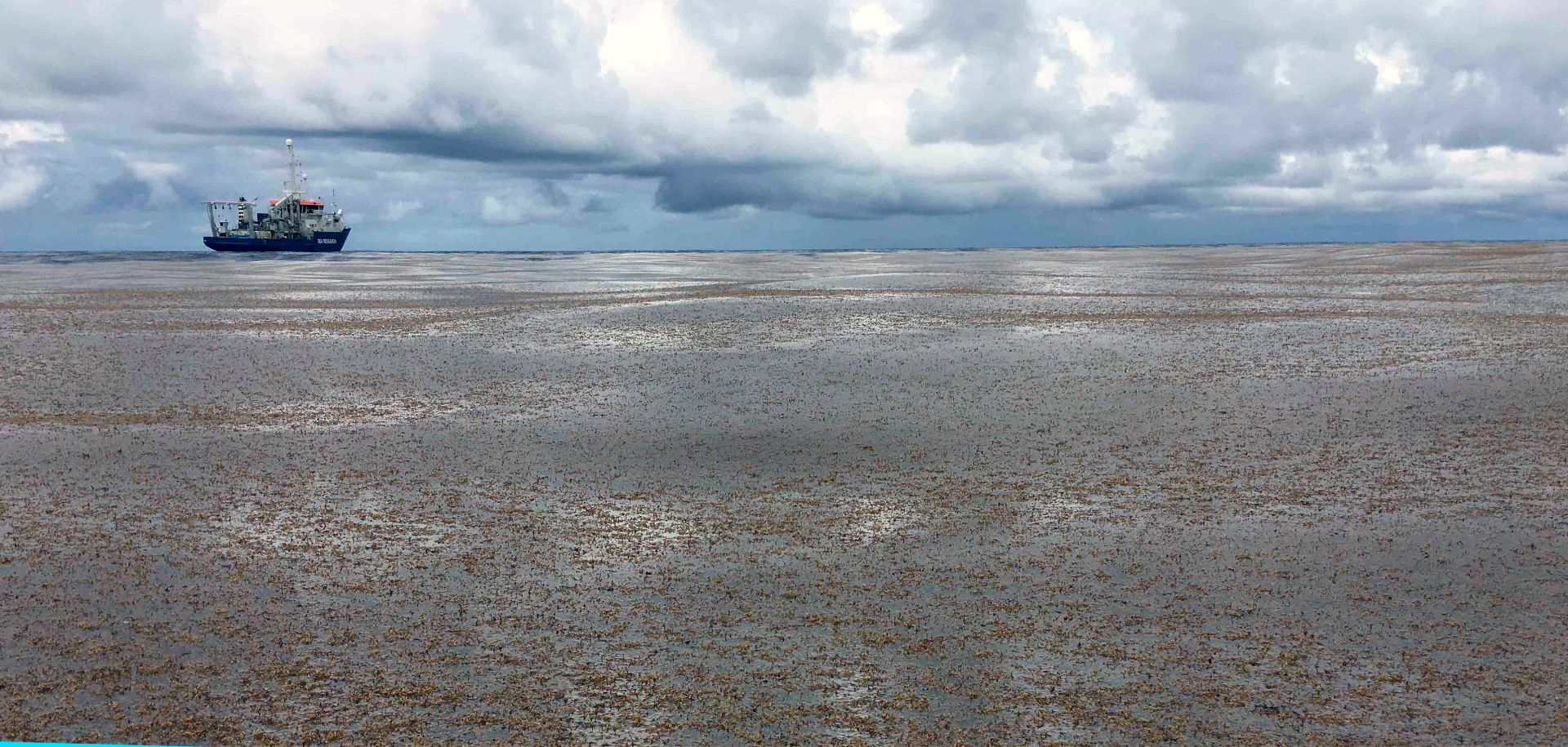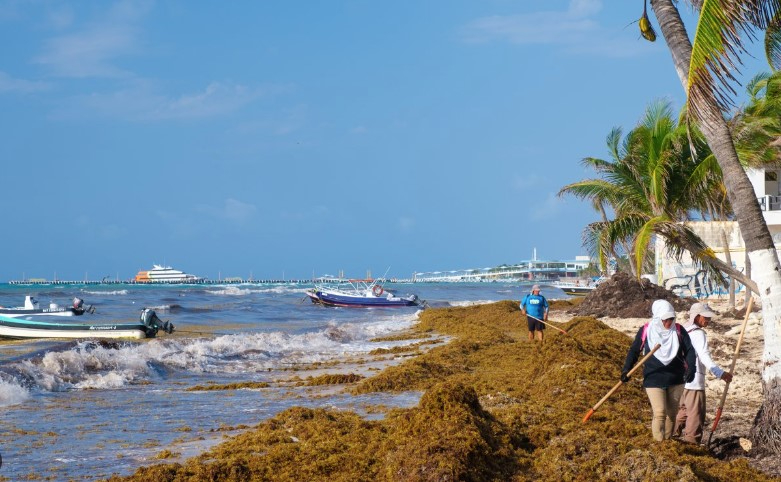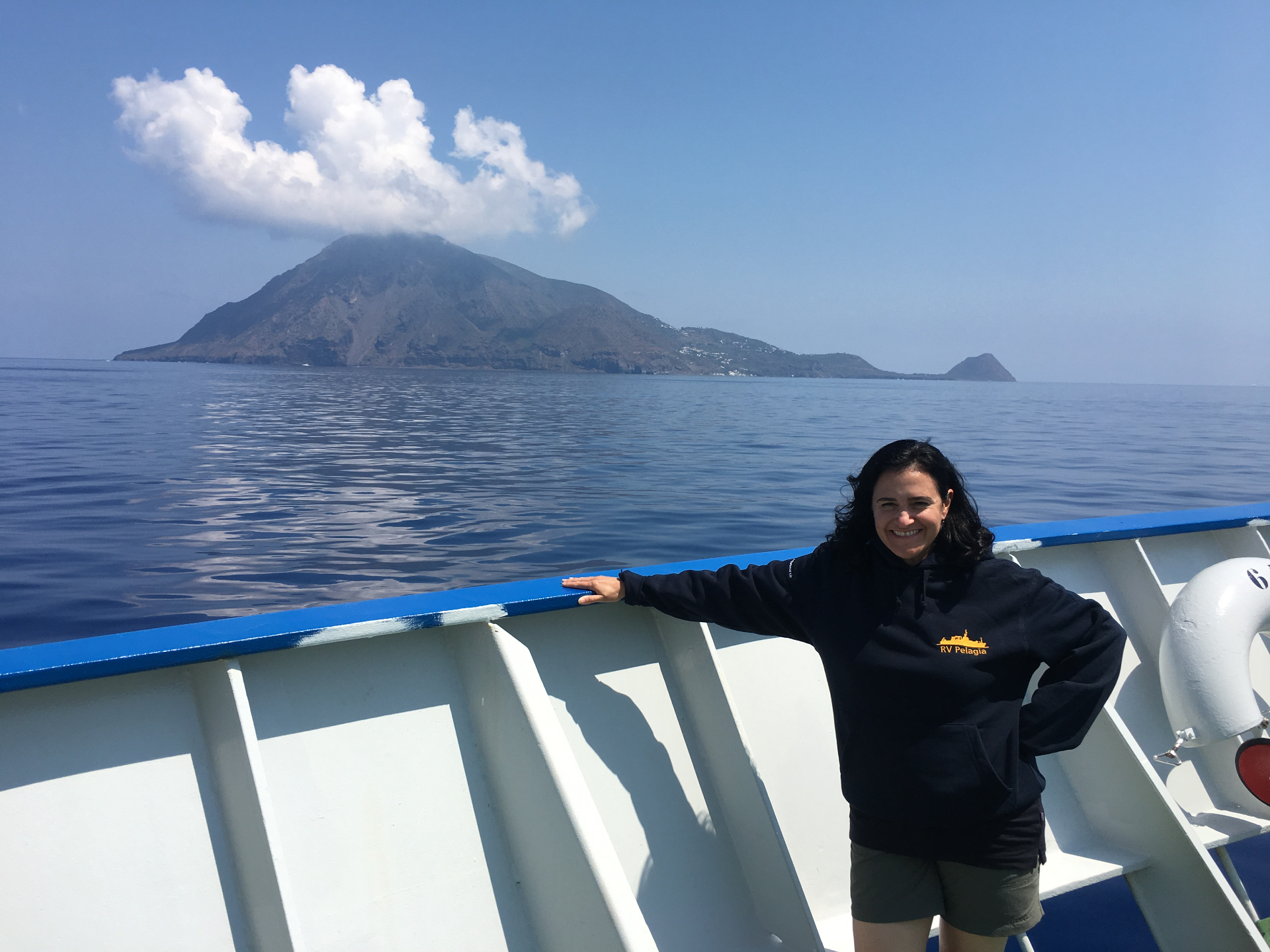NWO grant for research project to understand Sargassum inundations in the Caribbean
~~for Dutch scroll down ~~

For over ten years now, the Caribbean Sea and areas such as Florida, Brazil and western Africa have been experiencing nuisance from a brown seaweed called Sargassum natans and S. fluitans. After periods of blooming in the open ocean, (referred to as the Great Atlantic Sargassum Belt), the seaweed strands and dies off, accumulating on the Caribbean coasts and hindering tourism, shipping and local environmental and human health. Sargassum is indeed a native species to the Caribbean, but in the past it rarely came to wash up on coastlines in the entire region. Altered ocean currents and water temperature increases due to climate change are believed to be among the causes.
As part of the programme ‘Caribbean research: a multidisciplinary approach’, NWO participated in the international call ‘Sargassum 2 Joint call 2021: Understanding and predicting Sargassum Blooms’. Research projects from this call will investigate the causes of periodic, massive Sargassum blooming to improve the predictability of this phenomenon.
NWO is contributing 300,000 euros to this project; NWO is not involved in the other two projects that have been awarded funding in this international call. France and Brazil are the two partner countries in this call and are collaborators in the NIOZ-led consortium - for France, the Agence National de la Recherche (ANR, official secretary of the call) and for Brazil, the Fundação de Amparo a Ciência e Tecnologia do Estado de Pernambuco (FACEPE).

NWO draagt bij aan onderzoeksproject om Sargassum bloei in Cariben beter te begrijpen
Klimaatverandering of natuurlijke uitbreiding? Sinds 2011 heeft de Caribische Zee regelmatig last van een aanspoelende massa zeewier, genaamd Sargassum. dat gaat rotten als het zich op het strand of in havens ophoopt. Als deel van een internationale call , zal een Nederlands geleid project starten bij het NIOZ, dat bij zal dragen om de massale bloei van het wier beter te begrijpen.
Sinds een jaar of tien ondervinden de Cariben, plus ook gebieden zoals Florida, Brazilië en westelijk Afrika, overlast van een bruin zeewier genaamd Sargassum natans and S. fluitans. Na periodes van massale bloei in de open oceaan (genaamd de Great Atlantic Sargassum Belt) spoelt het aan en sterft het af op de Caribische kusten en hindert daar het toerisme, de scheepvaart en lokale omgeving en gezondheid. Sargassum is weliswaar een inheemse soort in de Cariben, maar vroeger kwam het slechts zelden tot aanspoelen in de hele regio. Veranderde zeestromingen en watertemperatuur als gevolg van klimaatverandering zijn vermoedelijke oorzaken.
Als onderdeel van het programma ‘Caribisch onderzoek: een multidisciplinaire benadering’ heeft NWO deelgenomen aan de internationale call ‘Sargassum 2 Joint call 2021: Understanding and predicting Sargassum Blooms’. De onderzoeksprojecten van deze call gaan de oorzaken van periodieke, massale Sargassum-bloei onderzoeken en zo de voorspelbaarheid van dit fenomeen vergroten.
NWO draagt 300.000 euro bij aan dit project; bij de overige twee toekenningen in deze internationale call is NWO niet betrokken. Frankrijk en Brazilië zijn de twee partnerlanden van het NIOZ in deze call , – voor Frankrijk het Agence National de la Recherche (ANR, penvoerder van de call), voor Brazilië de Fundação de Amparo a Ciência e Tecnologia do Estado de Pernambuco (FACEPE).
Weeds of Change: Characterising and Modelling the Sources and Sinks of the ‘Great Atlantic Sargassum Belt’
Prof. L. Amaral-Zettler (NIOZ)
This project will conduct research into the three themes of this call: constructing a communal dataset to feed the various hydrodynamic models, setting up biological models of Sargassum, and developing models that link the hydrodynamics and biology of Sargassum to explain the variability of Sargassum blooms.

"We are excited to be able to return to the Great Atlantic Sargassum Belt with an interdisciplinary team from NIOZ and Utrecht University alongside a transcontinental team of colleagues from France, Guadeloupe, Brazil, and Mexico, armed with new tools to study not only how Sargassum disperses horizontally but also vertically in the water column, " says project leader Linda Amaral-Zettler.
"We will study both present-day and past Sargassum populations using a combination of trace element, genetic, and lipid marker approaches with the hope of better understanding the unprecedented accumulations of this seaweed now inundating the coastlines of many island-Caribbean nations, as well three continents bordering the Atlantic."